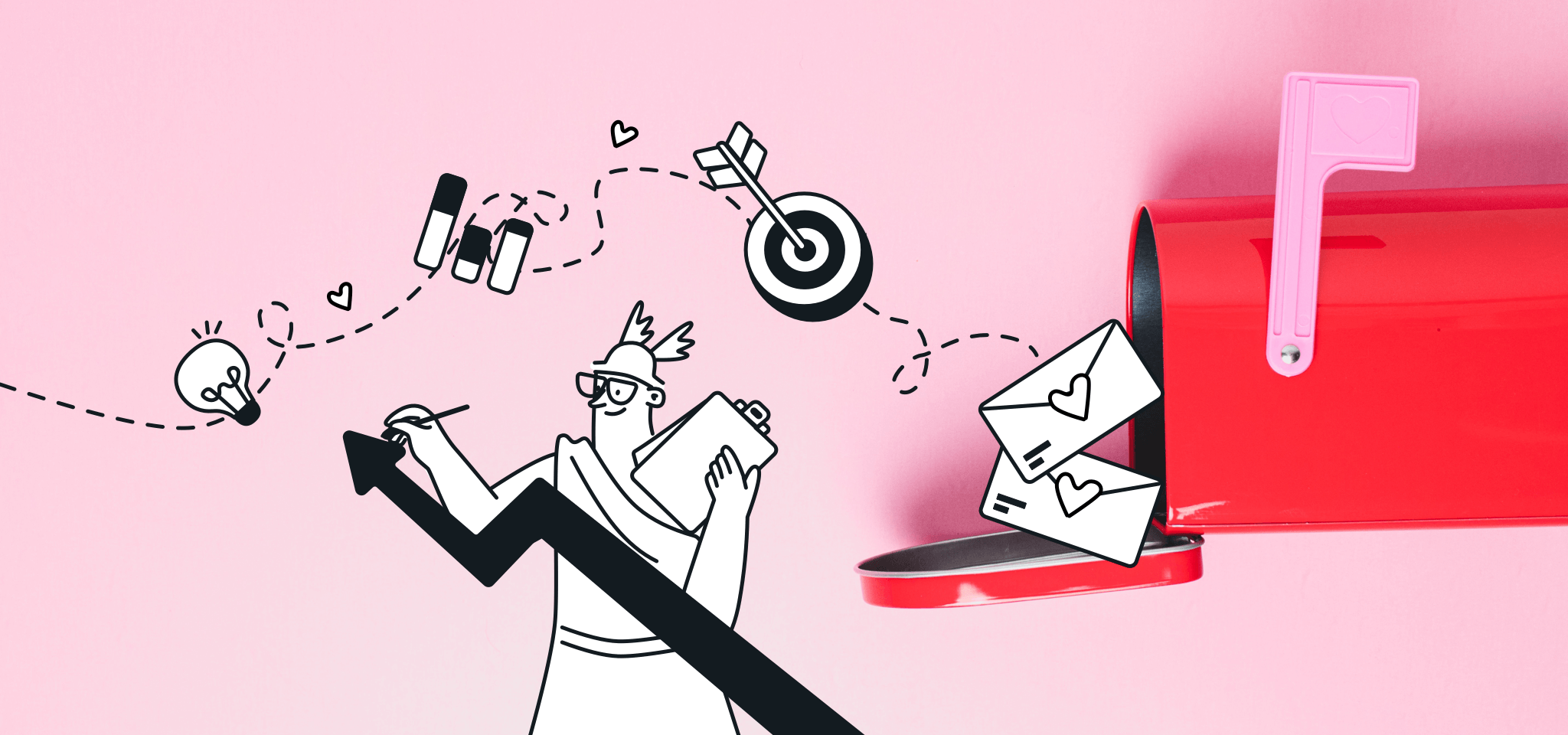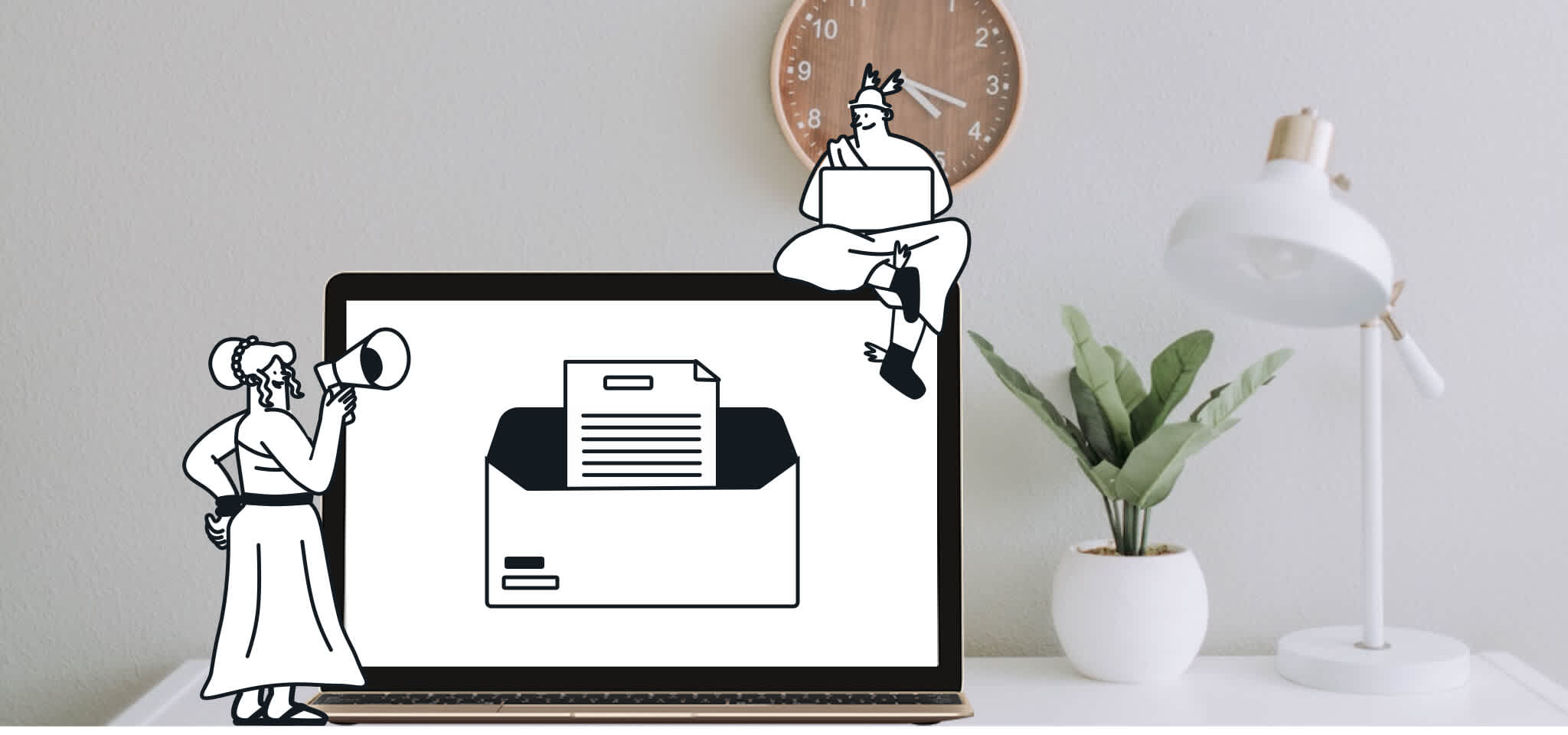Email Best Practices
Getting close to your audience using empathetic emails
Learn how using empathy statements in your email interactions can help you build customer satisfaction, improve customer loyalty, and grow your business.

PUBLISHED ON
We all know the best digital marketing strategies build long-term customer loyalty. After all, what business owner in their right mind wouldn’t want to grow and retain their client base?
But knowing that you want to focus on customer retention is only half the battle. Next, you have to develop a marketing strategy that delivers the results you’re after.
So, how do you develop a relationship with your customers that goes beyond a one-time transaction? Well, to quote Otis Redding: try a little tenderness.
In this article, we’ll discuss the power of empathetic emails to improve your business’s performance. Luckily, Mailjet had two very special guests at Email Camp 2020 that spoke on this very topic: Matthew Smith, from Really Good Emails, and Alex Patton, from Customer.ioc.
Table of content
Customer satisfaction
Improved customer loyalty
Problem-solving
1. Clear your mental inbox
2. Know your customers
3. Put yourself in their shoes
4. Be clear, kind, and specific
5. Set expectations and follow through
6. Send with intention (sometimes, less is more)
1. “Thank you for getting in touch.”
2. “We’re sorry…”
3. “You’re right.”
4. “We appreciate…”
5. “If I’m understanding correctly…”
The power of empathy
Whether you're an established ecommerce brand or a traditional retailer that's just starting out, conveying empathy in your marketing and customer support emails should be a central part of your digital marketing strategy. That's because empathy demonstrates that you care about your customer's needs and feelings and that you're invested in giving them a great user experience.
And, in times of crisis (e.g., with people stuck at home during a pandemic), empathy is more important than ever.
Here are some of the main reasons why business owners should use empathy in their customer communications:
Customer satisfaction
Regardless of whether they're new or returning customers, you want them to be satisfied with the product or service you provide. Happy customers help build your reputation, and everyone knows that a brand is only as valuable as its reputation.
By conveying empathy in your email interactions, you increase the chances that your customers will be satisfied with the service they receive. That's because displaying empathy makes customers feel valued and that they're receiving real human attention.
Improved customer loyalty
A direct side effect of customer satisfaction is improved loyalty. Customers who've been treated with empathy are not only much more likely to feel an affinity toward your business or brand. They're more likely to continue doing business with you, too. They're also more likely to spread the word to friends and family, helping you reach other potential customers.
Problem-solving
If you've ever had to deal with angry customers before, you know it can sometimes be difficult to find satisfying solutions to their problems. Sending an empathetic email can give you a chance to defuse the situation and help buy you time to fix the problem.
Pro tips to add empathy to your email
Here are a few pointers Matthew Smith and Alex Patton shared during Email Camp:
1. Clear your mental inbox
During Email Camp, Matthew spoke about "clearing your own mental inbox" before sending mail. The idea is simple: processing your own emotions first helps you communicate with more empathy.
Why? Because, as Matthew pointed out, your emotions come through in your messages. If you're distracted or upset, you aren't entirely focusing on your manner of communication because you're partially stuck on the issue that's distracting or upsetting you. Your mental inbox is full of junk, and it becomes difficult to express yourself effectively and authentically.
On the other hand, when you're relaxed, balanced, and focused, those qualities shine through your emails and communicate genuine good feelings and honesty to your customers. This makes them more likely to respond to your messages the way you want because they know you're being real with them.
2. Know your customers
Matthew posed an important question during camp: Do you know your customers?
While this question may seem basic, an important idea stems from it. How well you know your customers impacts what kind of messages you send them. If you don't know them, your messages will not resonate.
So, you need to figure out what your customers want. Maybe, as Matthew suggested, they want qualitative research like customer interviews and empathy maps. Or perhaps they want quantitative information like business data and cost updates.
Maybe they want cute GIFs of cats.
Whatever it is, find out what they want and stick to it.
3. Put yourself in their shoes
This is the heart of empathy: imagine how you would feel if you were the customer. That means putting yourself in their shoes and thinking of how you would want to be treated in the same situation.
As Alex Patton at Customer.io says, you should "send emails you'd be happy to receive."
4. Be clear, kind, and specific
Kindness is another key to building great customer relationships. Alex at Customer.io says to always “make sure that you are responding with kindness, clarity, and detail” when dealing with customer pain points and questions.
Empathetic language should be clear, natural, and easy to understand. Use simple words when possible, and avoid overly formal sentences. You should also avoid being too vague.
5. Set expectations and follow through
Matthew at Really Good Emails makes a great point about email voice and scheduling: state upfront how you're going to operate and stick to it.
Are you funny, friendly, or sarcastic? All of the above? Make that known to your readers. Do you send weekly newsletters on Tuesdays or discounts on Wednesdays? Tell your readers – and keep your word.
When you set clear email expectations and follow through, you provide a steady customer experience metric for your customers and your business. By examining that metric, you can see where your customer service may need improvement – and where you truly excel.
6. Send with intention (sometimes, less is more)
Alex advises to "make sure that your emails always have an upside for the reader." If your email has no reason to exist, don't send it!
For some of those messages' upsides, Alex suggests ideas like discounts, useful account info, and more. Send these messages sparingly and at optimal times. Your readers will always appreciate fewer quality messages more than a glut of empty advertisements and reminders.
Too many emails will feel like spam to your readers, which can negatively impact your email program. Make your readers glad they opened your message, and make them look forward to the next one.
Examples of phrases/statements for empathetic emails
Empathy statements fall into four broad categories: validation, clarification, reassurance, and appreciation. If you tailor your responses to fulfill any of these tasks, you'll be on track to make your email marketing more empathetic and successful.
But remember, authenticity is key. Customers can usually tell if you've written an empathetic email without meaning it. It's much easier to be empathetic when you take the time to consider the way your customers are actually feeling and appreciate the problems they’re facing.
Here are some examples of common empathy statements to use in a customer support situation:
1. “Thank you for getting in touch.”
Showing appreciation when customers contact you is an excellent way of building an empathetic relationship. Thanking them for getting in touch is a sign of respect for their time and effort.
2. “We’re sorry…”
Saying you're sorry might sometimes seem like admitting failure, but that isn't the case. In fact, apologizing demonstrates that you understand your customer's point of view and are invested in finding a solution to their problem. But remember to be authentic – just saying sorry without meaning it can come off as condescending.
3. “You’re right.”
A great way of demonstrating empathy is to validate a customer’s point of view. When you tell a customer they’re right about a situation or issue, it shows them you understand, that you’re attentive, and that you’re on their side.
4. “We appreciate…”
Showing appreciation for your customer’s business is a no-brainer. But you can also show appreciation for other contributions, like feedback, patience, or understanding.
Recognizing instances like these – and showing your appreciation – is a great way to make your customer feel valued.
5. “If I’m understanding correctly…”
To truly empathize with a customer, you have to understand their situation. You should always try to find an opportunity to clarify the customer’s meaning and make sure that you’re on the same page. This signals that you’re committed to working with them.
Speaking in the first person – saying “I” and “we” – also demonstrates a willingness to form a personal relationship with the customer.
Add empathy to your emails with Mailjet
Now you know a bit more about how empathy in your emails can help you, and you have a few strategies for facilitating empathy and building a solid rapport with your subscribers. With them, you can ensure that your customers will look forward to (and engage with) your email marketing.
Of course, we couldn’t have talked about these strategies without the aid of our awesome Email Camp 2020 guests, Matthew Smith at Really Good Emails and Alex Patton at Customer.io.
Check out Matthew’s session below to get more info on the mental inbox, email benefits, and more:
Check out Matthew's session below to learn more about the mental inbox, email benefits, and more:
So, there you have it. Genuine, authentic emails are well within your reach, as long as you follow some pro practices and, of course, be yourself.
Want to get more ideas to create better, more authentic emails? Sign up for our newsletter and get our tips in your inbox every week.








